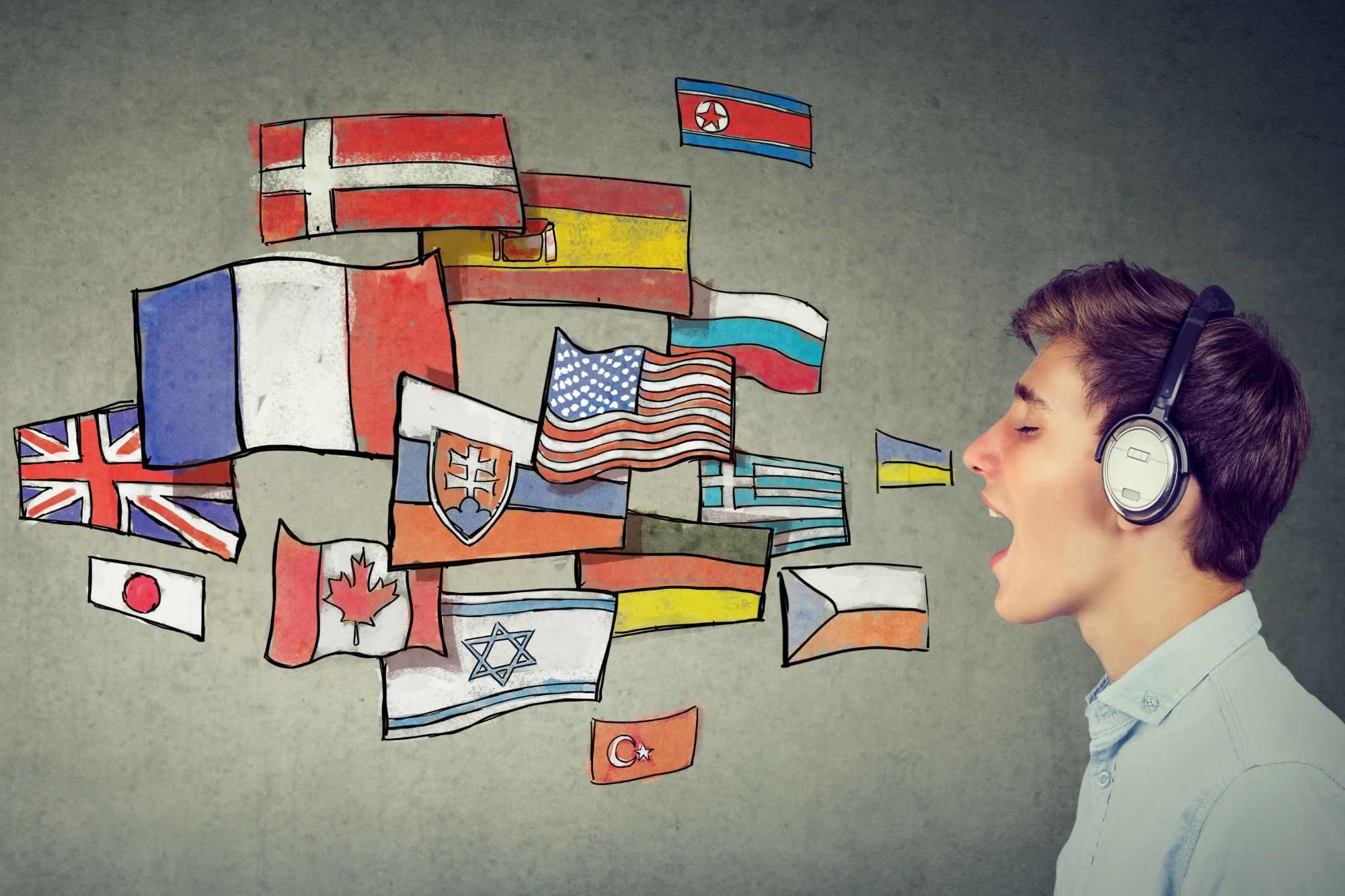What Translators Do, Others Learn Language is much more than just a means of communication. It is what makes us a civilized humans. Therefore, there is always something to seek from the work of a translator
Opinions expressed by Entrepreneur contributors are their own.
You're reading Entrepreneur Asia Pacific, an international franchise of Entrepreneur Media.

Throughout history, translators have played an important role in the dissemination of ideas and information. Today, they are highly interconnected professionals with knowledge of more than one language, using sophisticated technologies for translating technical, scientific, medical, financial, legal, judicial, literary, and other forms of content—so that we can also learn from. The global language services market has moved beyond from direct translation to offering a localised content services in an artistic form: there are subject-matter experts; and several levels of editing, filtering, scrutiny, verification, logical consistency, transliteration go on to creating the final work.
Many are familiar with Google Translate, which is a machine translation similar to DeepL that directly translates one language into another. And there are computer-assisted translation, or popularly known as CAT. These translation tools continuously learn from previous examples. However, "we have to strike a balance as there are a lot of subject matters, analog languages that are not fit for machine translation," says Conor Bracken, founder of Andovar, Thailand-based multilingual content solutions provider.
For instance, marketing-related subjects, which are context sensitive are not good for machine translation; but health files, which are quite straight-forward, is a good fit. Similarly, machine translation can produce a good quality content when it translates from English to Spanish due to the popularity of these languages. But the same may not be in case for English to Telugu or Tamil language of India as there aren't many online content found in the engine. Bracken suggests, "Instead, we have machine translation, a translator, and an editor. So the goal here is to reduce cost and turnaround time."
Accuracy in the Beholder's Eye
There are arguments that some may prefer to use machine translation to reduce cost, while some don't fearing a low quality work. Bracken says, "In the translation world, it's not the question of can you use machine or not? It's not a binary decision. It's more of asking where can I use it." Also, content solution providers often get the review of clients when a portion of the work is complete. There would be quality analysts who would be checking consistency, spacing, text, fonts, or if the translation is too long or too short—in turn, creating a localised content.
"There's a certain amount of subjectivity. It's a discussion for a client. Rather than having one quality metric for all clients, we believe that the quality is something that can be worked out between every client and every project. Accuracy is in the eye of the beholder," says Bracken.
As the internet continues to get faster, there's more and more content being delivered everyday. At the same time, when an industry is growing rapidly, the translation and localisation need is also expanding around the same rate as it helps companies to interact with their customers in their local language. Getting local is how it has helped the over-the-top (OTT) video streaming platform, Iflix, to foray in Southeast Asia's 12 countries. The company claims that 80 per cent of customers join Iflix for local content from the region. According to Mark Britt, founder of Iflix, 98 per cent of content are localised in the countries it operates, and the remaining is driven by English language-oriented western content from Disney, Paramount, Sony, the BBC and Media Prima.
Why Go Local?
The global language services market will grow by US$8.66 billion during 2018-2022, according to a research firm, Technavio. It is also interesting to note that the number of languages that people want are increasing because of the rise of emerging markets. The gaming sector, for instance, which has seen tremendous growth, is expected to further fuel the demand for more localised content. Bracken, whose company has done translations in close to 110 languages, maintains that the purchasing power parity, economic growth, and also the currency strength of a respective country play an important role in determining the market's growth.
Experts in the industry are of the view that in the past 10 to 15 years, people just looked at languages from markets with high economic value such as French, German, Italian, Spanish, Japanese, Chinese and Korean. But with the rise of emerging market economies that are expanding and getting wealthier at a faster rate than the developing and developed economies, it has been more common to add a longer list of languages because of the purchasing economy, which otherwise wasn't there 10 years ago.
Indian market, for instance, is predicted that at some point there will be a boom in the localisation of languages from English to other Indic languages besides Hindi. The country currently has 22 recognised languages. Facebook is currently available in 12 Indian languages, followed by Google in eight and Twitter in seven languages, respectively. Similarly, many Indian startups have started carving out a niche in the market offering services in as many Indian vernacular languages.
An esports platform, WinZO is currently present in nine Indic languages besides English. The co-founder of WinZO, Saumya Singh Rathore, says that the startup understood very early that vernacular languages would be pivotal to cater to a larger market in India, and moreover to drive payments. The company, which started in March 2018, has already added more than nine million users, of which 80 per cent are using the app in non-English languages, with 40 per cent in Hindi.
Eye For Work
So how does an organisation evaluate if the translation has been properly done? Bracken suggests that quality assurance requires close attention to look at different metrics. "When a normal translation work of around 400 words require an hour to finish, and if somebody is translating the same in half-an-hour, we know that there is a risk for us. Also we see the number of changes made by the editor," he added.
WinZO—who has hired a pool of local content creators comprising school teachers, housewives, students working on localising the content for its app from their home—has built an in-house digital portal where content creators can log into it and start localising the content. Rathore says, "There are levels of quality testing we do. Once a content creator completes the work, a first degree check is done by a QA which will be validated by the second QA then we push it out on the app."
Pay is Well
Very often, the language service industry has paid translators or content creators in a supply versus demand equation. In some cases, payment also varies in terms of cost-of-living. For instance, Japanese translators are usually paid higher than Chinese because the cost of living in Japan is much higher than the latter. While in other cases, translators are also paid according to the uniqueness of a language, such as Icelandic or Maori, as there aren't many people who can do that. Bracken says that an Icelandic translator might get up to 25 cents per word, while for Maori translator may get 50 cents per word, and Spanish translator may get paid lowest due to the popularity.
While most translators are native speakers living in their home country, but not in every case. Rohit Agarwal is based in Noida, and handles Japanese clients for an IT company as a business manager. His interest in the language grew after watching Japanese anime series, such as Pokemon and DragonBall Z. He learnt the language out of passion and spending pastime activities. He says, "I realised, you learn your mother language fast when you read, talk, listen or watch in that language. So I started listening to songs, movies, and reading articles —or, any kind of programmes—in Japanese language." Later, he took Japanese language proficiency (JLPT) course, and joined the IT firm where he handles all the Japanese-related work for his firm, from translation to speaking to the client, etc.
There are various sources to seek an eligible translator. Organisations' resource management or vendor management continuously look out for translators via recruitment websites, LinkedIn, and other channels. They not only seek translators but also subject matter experts—because marketing translator may not be good at finance, and finance translator may not be good at legal.
On the other hand, technology has allowed companies to offer remote and flexible work terms. Close to 90 per cent of Andovar's work are outsourced to freelancers who get paid on a per word basis. "We also evaluate if some work requires higher rate, such as medical translation. The offer on rates also vary upon language," says Bracken.
Language is much more than just a means of communication. It is what makes us a civilised humans. Therefore, there is always something to seek from the work of a translator. There are more than 7,000 languages spoken in the world today. But, about a third of those have fewer than 1,000 speakers. According to UNESCO, more than 40 per cent of those languages are in danger of extinction. For instance, India in its 1961 census had listed 1,652 mother-tongues, but the data of 1971 showed only 108 mother tongues. It is very curious to know where have all these languages gone?












